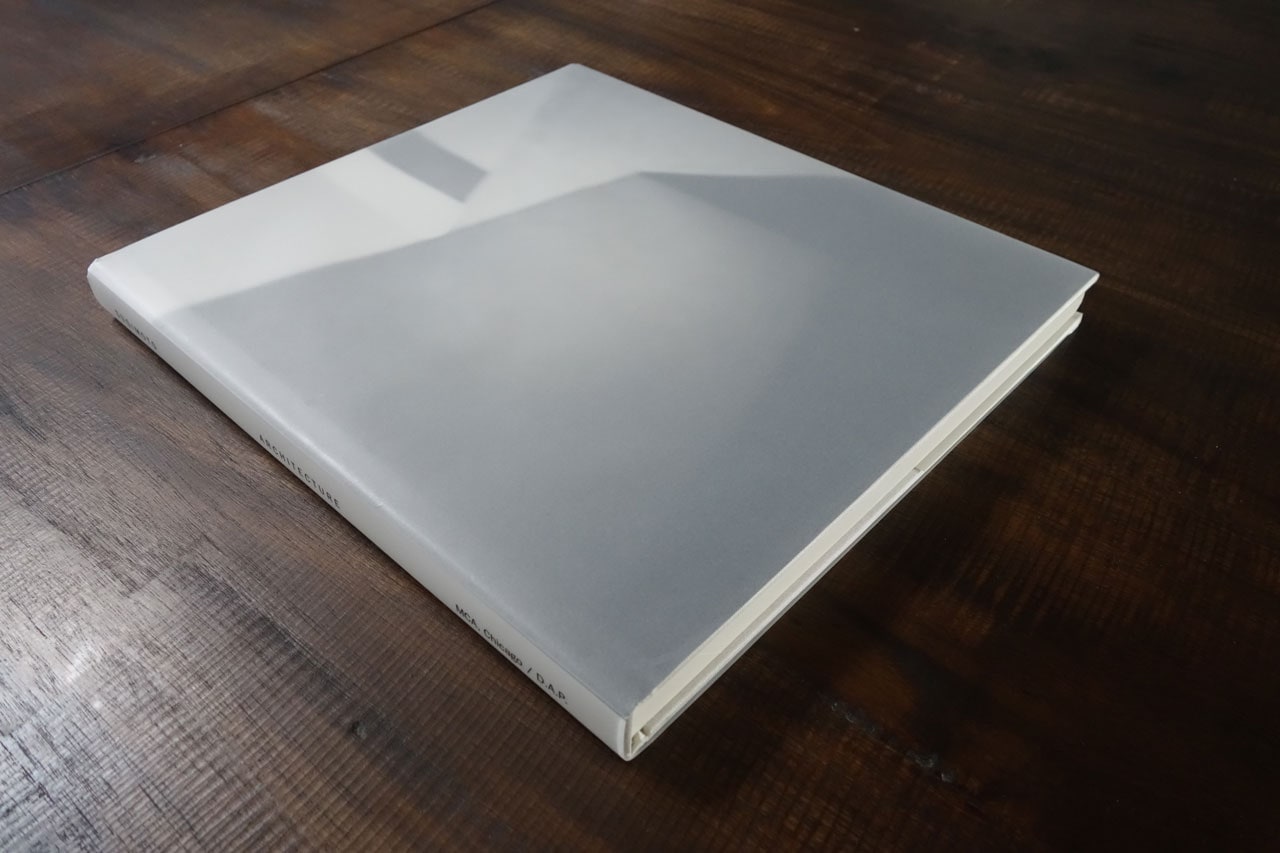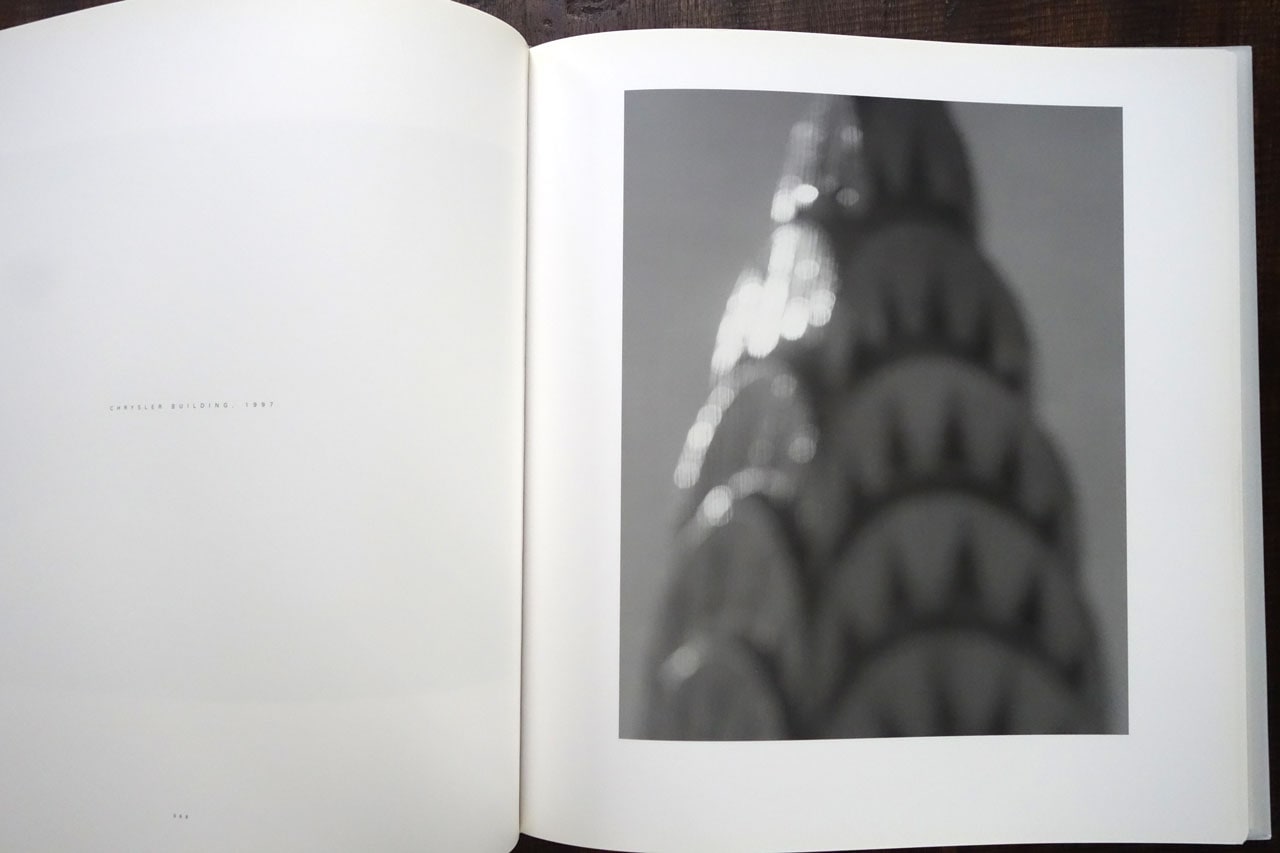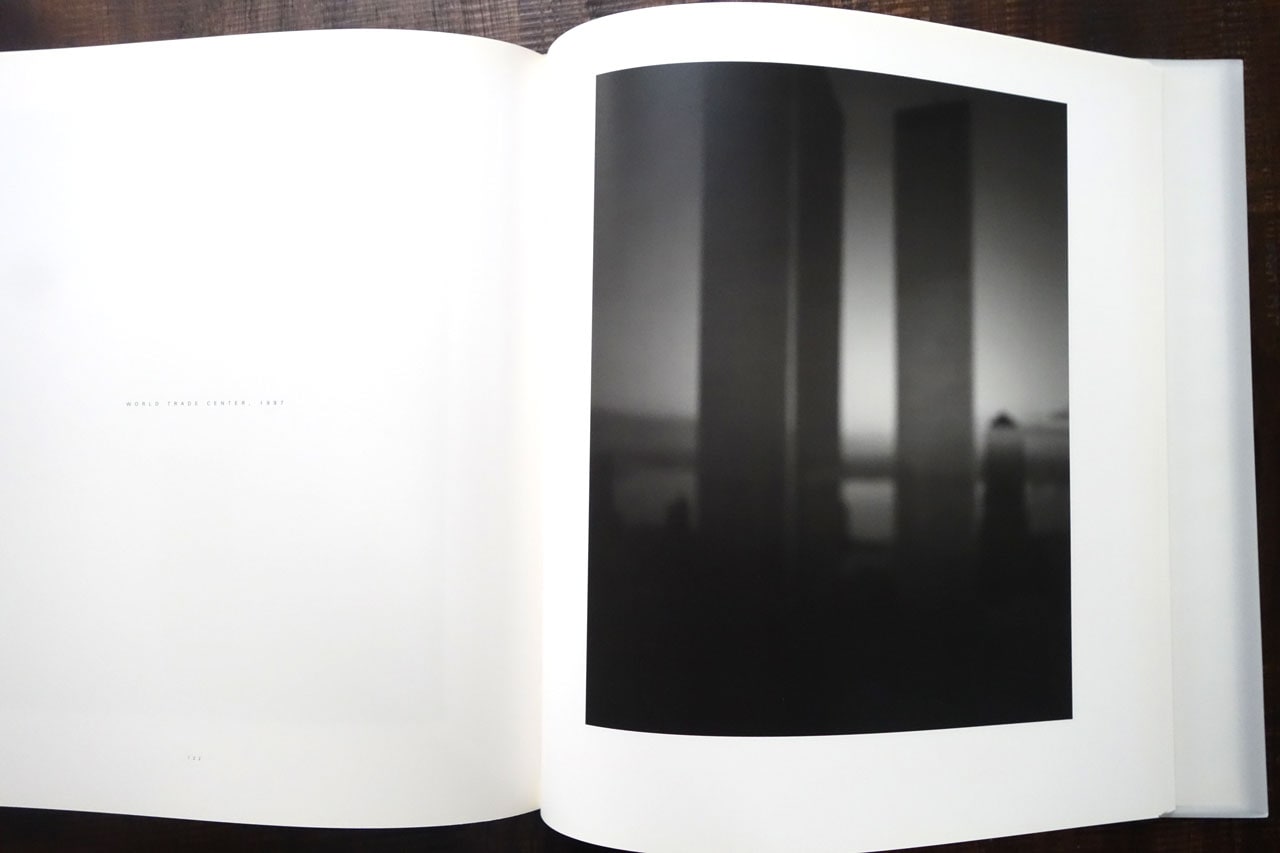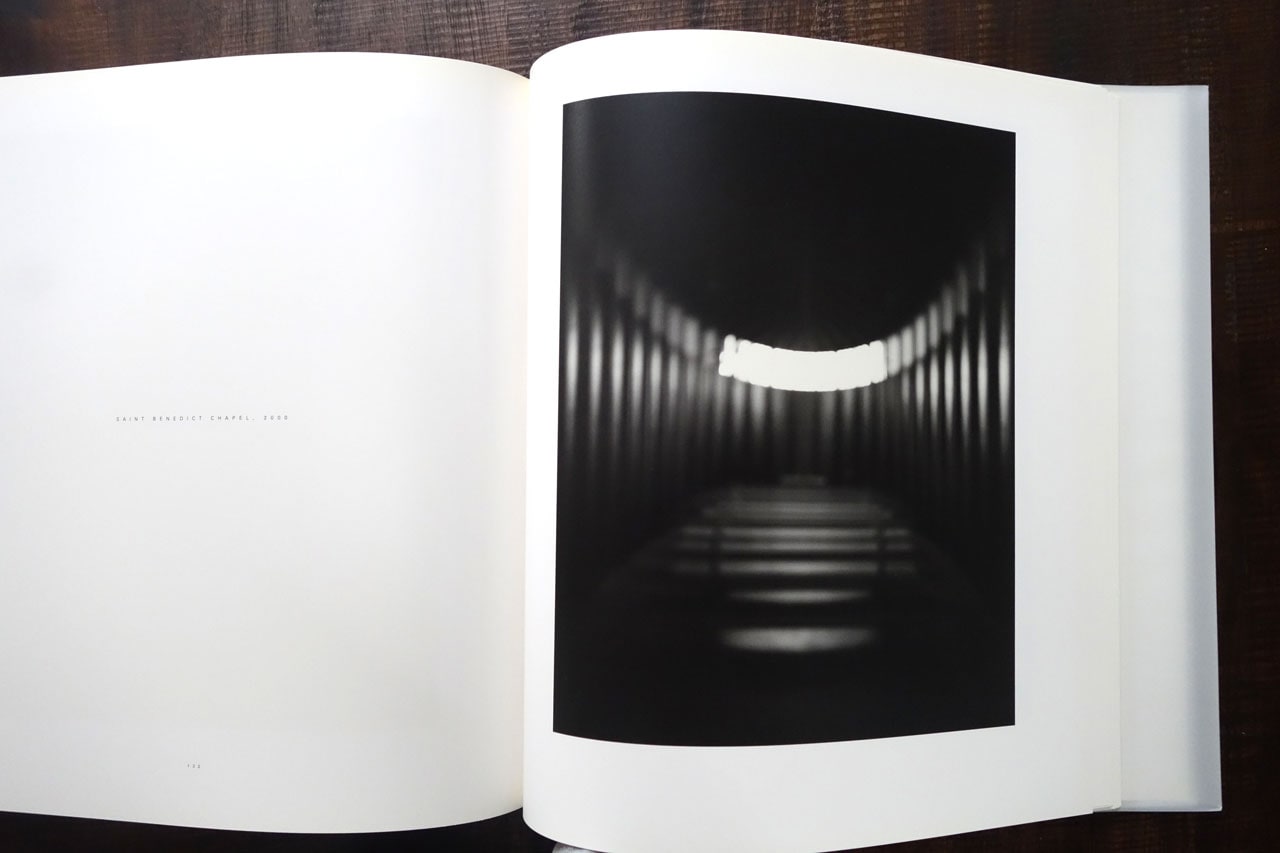Architecture by Hiroshi Sugimoto

I first saw this set of work as an exhibit at the SFMOMA and was captivated by the beauty in the simplicity. Sugimoto’s photographs of architecture are blurred which removes the detail and leave the essence of the buildings. This transforms these popular icons and structures into unknown shapes creating mood, mystery and intrigue.
This book and Sugimoto’s approach is atypical to normal photography. Sugimoto does not try to make the buildings look pretty which tends to be what the public generally looks for in art. If your idea of photography is that it is supposed to represent reality, if you like your photographs with crisp detail and clear cut imagery, then Sugimoto’s Architecture might not be the book for you.
Architecture is a beautifully designed book in its subtleness and grace. The book was designed by Takaaki Matsumoto for the Museum of Contemporary Arts, Chicago exhibit which commissioned the Architecture exhibit. The book is a good size at 11″ x 12″ with most prints around 7.5″ x 9.5″ on the page. The book contains 61 plates across its 168 pages.
The book opens with three reviews of Sugimoto’s Architecture series. One as a letter to Sugimoto discussing the work, one as a review with a slant toward architectural history and the final reviews The book ends with a “biography” which is just a listing of various awards, exhibits, books and reviews. This seems to be a little much since the listings go on for several pages, but it is at the back so there is no real impact on beauty of the book.
It seems every review about Sugimoto must mention his previous series of long exposure movie theaters. Is because that is what gave Sugimoto his first popularity or that people just still think he’s crazy for taking a single photograph of an entire movie. Possibly both. So consider his theater series duly mentioned.
“re-create the imaginative visions of the architecture before the architect built the buildings”
Sugimoto’s images are purposely blurred photos of architecture, when normal photographs are tack sharp. Usually the goal of architectural photography is to show all the details and the reality of the man-made structure, highlighting the work and the grand achievements that man was able to do.
Sugimoto turns this on end and shows the structures without any detail. The hand of man is not seen in the building as shown. Instead, they are almost part of the landscape, shown as more natural and graceful objects that are almost sacred and have always been around. Viewing these in a post-9/11 world reminds us how delicate and fragile our buildings actually are.
The plates are also shown in the order that the buildings were completed, all almost entirely of modern structures. The first photograph is of the Temple of Dendera, (~50 BC) which segues beautifully across the thousands of years to the second photograph of the Brooklyn Bridge (1883). The two structures are remarkably similar, Sugimoto possibly was alluding to the ties that our modern society has to ancient times. The buildings as shown tend to have a timeless quality about them.
A few of my favorites, though it was difficult to choose only three since I like so many of them.
Chrysler Building, 1997 — The Chrysler building is one of my favorite buildings in the world. The crown of the building has an elegance in it’s art deco design and the way it reflects and captures light. Sugimoto’s photograph is able to capture this beauty I’ve always found in the building.

World Trade Center, 1997 — The photograph of the World Trade Center is a dark and moody image which is particularly chilling considering what the future held for the complex. One of the smaller buildings appears in the photo almost as a person with their head hung low facing the two towers.

Saint Benedict Chapel (interior), 2000 — An interesting portrayal of architecture. The photograph seems to only show how light interacts with the building. A bold and bright center panel of light dominates the image with slivers of light and its reflections radiating from it. It is beautiful in its simplicity and minimalism.

The book is out of print, but some new and used are still available on Amazon.